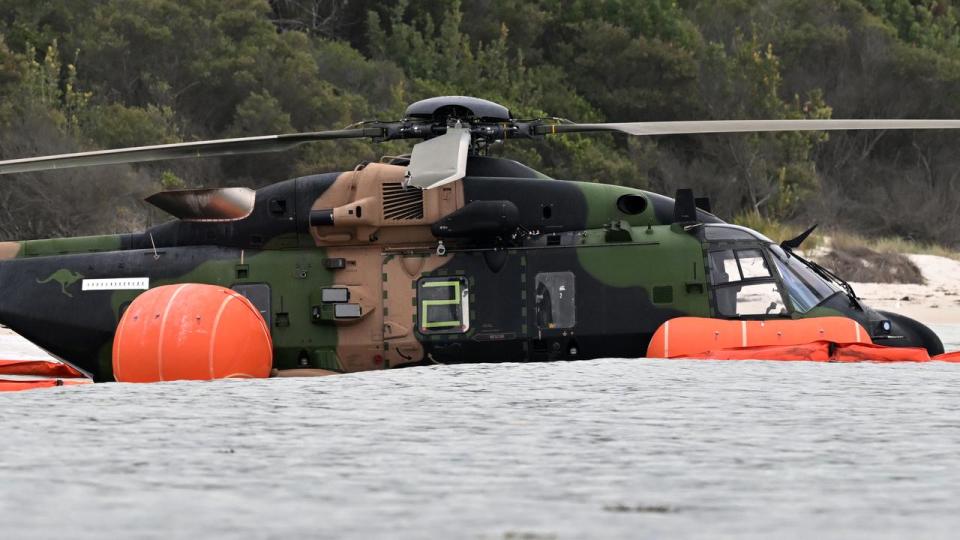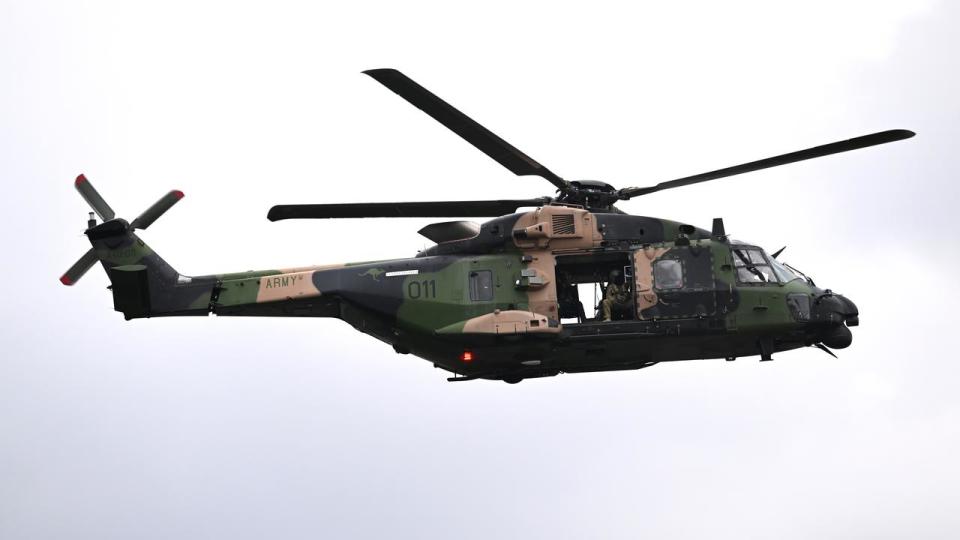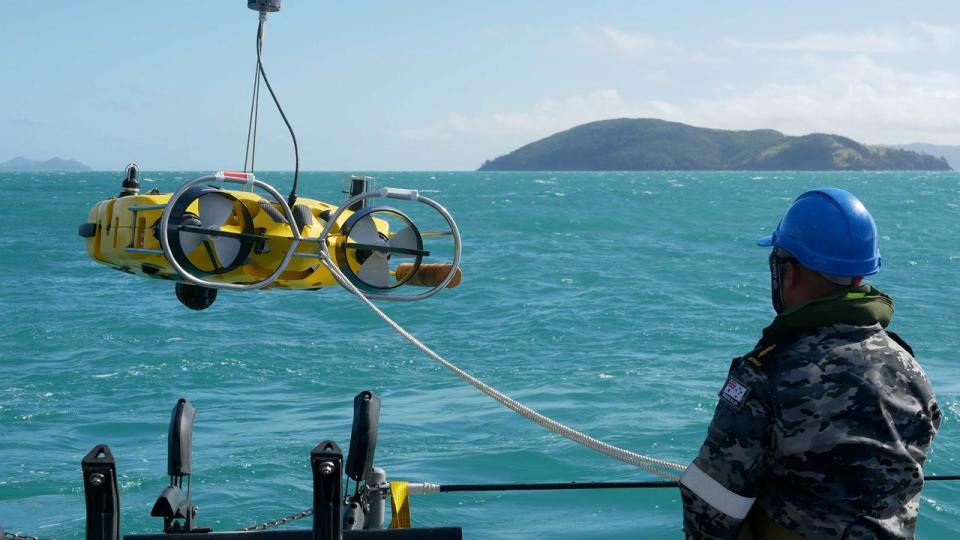Engine failure risk warning before fatal chopper crash
The risk of engine failure in the MRH-90 Taipan army helicopter had been known to air crew months before a fatal crash off Queensland's coast, an inquiry has been told.
Captain Danniel Lyon, Lieutenant Maxwell Nugent, Warrant Officer Class Two Joseph Laycock and Corporal Alexander Naggs were killed when their MRH-90 Taipan plunged into the sea off Queensland's Lindeman Island on July 28, 2023.
A former MRH-90 pilot, referred to by the pseudonym D15, said air crew were briefed on the risk of engine failure in the helicopters following a crash in Jervis Bay, NSW, several months before the fatal Queensland incident.

"(We were) essentially briefed to say that there was a chance that an engine could fail in the exact way that it failed on that particular flight," he told the hearing in Brisbane on Thursday.
The fatal Queensland crash's cause has not yet been determined.
The air crew were also briefed on the risk that the MRH-90 would be inescapable if it plunged into water due to engine failure.
Air crew began flying without gloves to have a better chance of removing themselves if the aircraft crashed into water, D15 said.
When used in its normal role, D15 said the MRH-90 was a safe aircraft, but when flying in special operations, it was not.
They said putting an operational focus over safety made the aircraft more dangerous.
Fatigue was raised again as a major concern among air crew in the months before the crash and during the military exercise Talisman Sabre.

On Wednesday, another MRH-90 pilot - referred to as D20 - also claimed they and other troops were experiencing fatigue during the training week with air crew offered sleeping tablets.
D15 said tensions were rising between air crew and relationships were fracturing due to fatigue on the night of the crash.
They said air crew began to "normalise" their fatigue levels.
"There is nothing to distinguish between yesterday and today - because you were tired yesterday and you still went flying and successfully flew that mission - if you're tired today," D15 said.
"That's the insidious nature of fatigue."
Details of the difficult search and rescue efforts turned recovery mission following the Queensland crash were raised in the inquiry on Thursday.
Commander Ryan Post, responsible for the navy diver recovery operation, said the "atrocious" ocean conditions while looking for the MRH-90 helicopter were the worst his team had seen.

Navigating the wreckage became dangerous as a result.
"There was a rotor blade which had been splayed open like a fan and was razor-sharp," Commander Post said.
"It was dangerous, challenging and some of the most technical diving our guys have done."
Commander Post said his team was concerned it would unexpectedly uncover human remains as divers could only see 30cm in front of themselves in the churning water.
"In the back of your mind, you're always cautious that when you turn that seat over, or when you turn that piece of metal over, or you come around a corner, around an object, that there's going to be something there," he said.
Divers uncovered human remains on the search's third day while the recovery efforts continued for a fortnight for aircraft parts, he said.
The inquiry continues on Friday.


